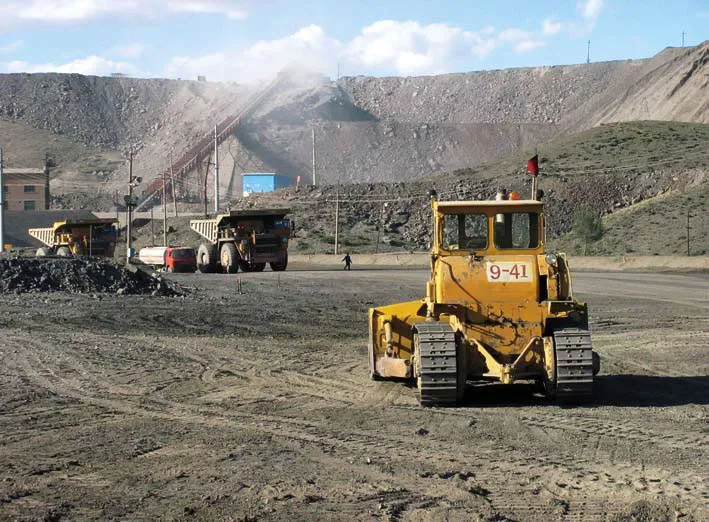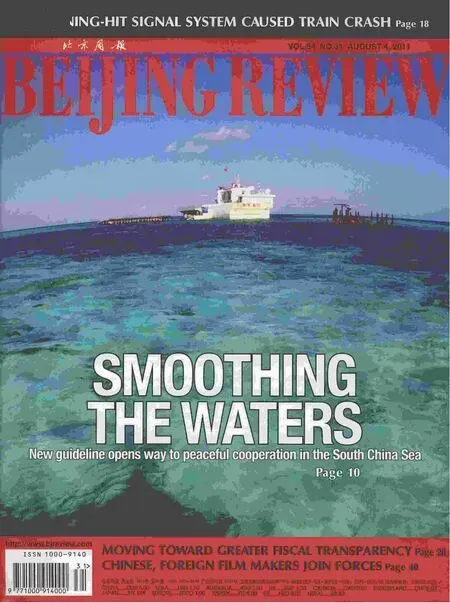Rare Security
2011-10-14ByHUYUE
By HU YUE
Rare Security
By HU YUE

CFP
China’s regulation on rare earth accords with WTO rules
Worries abound Western countries may use a recent WTO ruling on China’s exports restriction on nine raw materials to launch actions against China’s curbs on rare earth exports.
An expert panel of the WTO on July 5 ruled China’s export restrictions on nine raw materials—bauxite, coke, fuorspar, magnesium, manganese, silicon metal, corundum, yellow phosphorous and zinc—are inconsistent with global trade rules.
The U.S. had threatened to lodge a WTO complaint specifcally over China’s curbs on rare earth. Last year it asked business groups and unions to provide evidence China is hoarding these elements.
EU Trade Commissioner Karel De Gucht said the raw materials ruling would greatly enhance the EU position in a rare earth appeal.
“The EU wants to see the principles that guided the WTO panel in making the judgment on raw materials also applied to rare earth,” he said.
But he also called for a negotiated settlement with China to avoid a full-fedged trade war.
“I am not concerned about possible WTO challenges to the country’s policy on rare earth because we have already had effective discussions with the EU,” said Minister of Commerce Chen Deming.
“The rare earth issue has not entered the WTO stage,” he said.
Zhong Shan, Vice Minister of Commerce, said the country will continue to improve its regulations over exports of rare earth according to both Chinese law and WTO regulations.
For the purpose of protecting the environment and its limited natural resources, the Chinese Government in recent years has reinforced its administration on certain resources, especially “high-pollution, energy-consuming and resourcedependent” products, said Yao Jian, spokesman of the Ministry of Commerce (MOFCOM).
In June 2009 the United States, the EU and Mexico appealed to the WTO that China’s export quotas and tariffs on raw materials unfairly favored domestic manufacturers, while driving up international prices. China, in its defense, claimed those measures were necessary to conserve its natural resources and protect its environment.
“Although these measures have certain impacts on domestic and overseas users, they are in line with the objective of sustainable development promoted by the WTO and they help propel the resource industry toward healthy development,” Yao said.
“Rare earth is a nonrenewable resource of strategic importance. Tightened regulation will help protect the environment and accelerate the industry’s restructuring,” Zhong said. China will also synchronize the regulations of exports and domestic production and consumption.
Intractable problems
Rare earth is a group of 17 minerals on the periodical table. Their unique magnetic and phosphorescent properties make them vital ingredients for producing sophisticated products ranging from electric car batteries and wind turbines to aerospace alloys. But mining the precious metals causes serious damage to the environment.
Worse still, reckless exploration has left China in a dire situation with sharply reduced reserves, illegal mining and disorder in exports.
China is now the world’s largest rare earth exporter. In 2009, it mined 97 percent of global rare earth minerals, but its reserves made up only around 36 percent of the world’s total, down from 43 percent in 1996.
Smuggling is also a problem choking the health of the emerging industry. Wang Caifeng, a former offcial with the Ministry of Industry and Information Technology and a member of the China Rare Earth Industry Association, estimated that smuggling siphons off about half of the rare earth metals leaving China each year.
Smuggling is on the rise because of increasing returns as government regulations drive up prices of the metals, Wang said.
Smugglers use many tricks to bypass customs checks, including fabricating customs paperwork or marking rare earth as iron oxide or similar materials, said Chen Guiyuan, Deputy Director of the Hohhot Customs in Inner Mongolia Autonomous Region.
While China exhausts its limited resources, many Western countries are hesitant to tap their own reserves.
The United States and Russia, for example, control 13 percent and 19 percent of the world’s rare earth reserves, respectively. But both countries have left their own mines intact, relying on cheap imports from China instead.
The EU has also launched a strategy to strengthen its rare earth reserves. Their key was to seek greater access to rare earth metals through free trade agreements with Central and Latin America, as well as enhance technological development and innovative capacities for rare earth recycling and substitution.

CFP
Japan imports around 30,000 tons of rare earth from China every year, and keeps at least two thirds of those resources as “rainy day” reserves. Meanwhile, the Japanese Government extended heavy support for companies acquiring rare earth mines overseas. It is estimated the stock of Japan’s rare earth is enough for the country to use for the next 20 years.
Consolidation efforts
Efforts to streamline the fragmented industry are already underway.
Since 2003, China has put in place a quota system for rare earth exports and has since 2006 stopped issuing new mining licenses. MOFCOM recently announced rare earth export quotas for 2011 totaled 30,184 tons, almost unchanged from last year’s and down nearly 40 percent from 2009.
On May 19, the State Council released Guidelines to Promote Sustainable and Sound Development of the Rare Earth Industry, vowing a string of measures to reorganize the sector.
As traditional mining techniques are destructive to forests and farmland, policymakers pledged to phase out outdated mining methods and set tougher standards for companies in terms of energy effciency and emission. This move is expected to force a majority of smaller frms out of the market, said Chen Zhanheng, a senior researcher at the Chinese Rare Earth Society.
In addition, the government is determined to push forward mergers and acquisitions within the industry. The short-term goal is to allow the top three producers to control 80 percent of the ion-adsorbed rare earth industry in south China.
For the frst time, the country made plans to create a national strategic reserve for rare earth. Without government approval, no company is allowed to explore deposits in these reserved zones.
In a bid to prevent rampant mining, the Ministry of Finance in April 2011 ordered a hike on the resource tax rates of rare earth metals.
“The valuable minerals were sold at amazingly low prices as Chinese supplies flooded international markets” said Lin Donglu, Secretary General of the Chinese Rare Earth Society. “So the most urgent task for China now is to strengthen its pricing power and put the prices back to a reasonable level.”
“The key lies in thorough implementation of those measures,” he said. “The efforts to control output may be watered down as local governments encourage exploitation as source of fscal revenues.”
